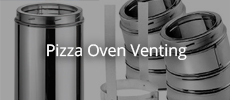X
-
Well I managed to wait until this morning to pull the inside form out of the oven. I was very paranoid that there was going to be some leakage and I was not going to be able to clean it off. Fortunately there was none and it turned out well.
-
Well I managed to meet my goal for today. I managed to get the dome all closed in and poured the keystone. I used the fiberglass form to quickly lay the 2 remaining rings of bricks. That went very fast and was super easy. Once the mortar seti removed the form and everything held very nicely. I then scrubbed the bricks clean so that I didn't need to do that once I had poured the keystone. This worked well and was pretty easy to do from the top side of the dome. I was afraid if I didn't clean before I poured the castable the mortar would have set to hard to be cleaned. Now I will just hope the castable doesn't leak and make a mess.
I now will need to start cleaning my work area up so I can insulate and get ready to pour the concrete counters.
Randy
Leave a comment:
-
Ok I think I am in good shape here to hopefully meet my goal of finishing the dome tomorrow. I finished row 9 this afternoon removed the props and cleaned the brick faces up. I also got the fiberglass dome form installed. That was a bit awkward to try to get the jack lifted high enough and still work it and hold the form in place too. I managed to get it done but it was not the easiest thing to do. Maybe if I had someone hold the form in place it would have been easier.
Tomorrow I will have 2 more rows of bricks to lay and then once they are set up enough to support themselves i will probably pull the form quickly and clean the brick and the reinstall the form and pour the refractory castable. That will finish the dome part of the build. I will have to build the vent arch and install the vent casting. It almost surprises me that I managed to hopefully meet my goal.
Randy
Leave a comment:
-
Well i am back at it again this afternoon. Just finished up my 1st bucket of mortar for this afternoon. I decided that I was going to go one row farther than the instructions dictate but it is going well. Took about 25 minutes to lay half the layer with proping the bricks in place with some sticks I had sitting around. I plan to finish this row like this then set the form and finish it up.
Randy
Leave a comment:
-
I forgot to mention that I also stopped by a drywall supplier yesterday and picked up some 18 gage steel studs. I wanted to go with some heavier duty ones because I plan to pour a counter on top that is 2" to 3" thick. I feel like the thinner stuff available at home depot and menards are just not strong enough to hold that much weight and I don't want to worry about them collapsing.
Randy
Leave a comment:
-
I got a bit more work done today. I finished row 8 and put 2 bricks on to row 9 to finish up the bucket of mortar that I had mixed up. With the new sticks I cut today I am pretty sure I could easily hammer out row 9 without much issue. If you count the time it took to un tarp the oven and get everything I needed out I had about 2 hrs involved to get this row done. I may need to start making smaller batches of mortar but so far what I have been doing has been working well. I can fully set about 8 bricks and back fill all the gaps. I have been getting each batch done in 25 minutes or so. It is starting to get pretty thick by then too. I decided to walk with my wife to get my son from daycare this afternoon and ended up stopping to visit some friends in the neighborhood. If I had just stayed home I am almost positive I could have finished row 9 as well. Oh well I guess I need to take a break every now and then too.
Randy
Leave a comment:
-
RandyJ , you're not wrong. Physics tells us that a complete ring should hold steady when the form is removed. Even though I was using the supplied stagger bricks, I had been cutting a brick here and there so I could stagger the joints properly. I knew I could never get a tight enough joint using an angle grinder to keep the ring in place. However, even without that consideration, row 10 and above were so vertical, I doubt even a tight fit would have held them in place.
Leave a comment:
-
Hey Giovanni Rossi I may be wrong but there should be no reason one could not lay a ring of bricks and the once set up pull the form and clean so you are then ready to reinstall the form and do the next ring. I may be missing something but once laid each ring should be self supported. For sure once the mortar begins to set up. If anyone sees a flaw in my thinking please let me know. Otherwise I will probably plan on doing it this way.
Randy
Leave a comment:
-
Randy, I tried playing with the brick saturation, but it didn't seem to matter. As you would guess, the slipping really became an issue after row 8. I didn't use the fiberglass form because I wanted to clean mortar from the inside of the dome and I knew as soon as I dropped the form the bricks would move. Though It really is an exercise to do that bc no one will ever look at the top of the dome.
You're making great progress toward with your deadline!
Leave a comment:
-
Hey david s thanks for the tip. I have been moving in that direction and it has been helping. If I follow the kit direction I only have one more ro to go before I put the fiberglass form in and just lay the bricks on that.
I just finished the 7th row of bricks today and that cleared the top of the door. I am pretty sure that I avoided the droop on this build. I know that I had problems with that on my last oven. My sticks that I have been using to prop bricks may be to short to keep using so I am not entirely sure what I will do next. Maybe I can just use a bit of scrap lumber to shim them up a bit so they can reach.
I am super excited to be getting close to having the dome built. But also a bit sad. I have really ripped through it and if things go how i am thinking i will finish it by next weekend, but it is supposed to rain a lot here in the next week. So we shall see how this all goes.
Randy
Leave a comment:
-
It is not only the consistency of the mortar that’s important, but also how wet the bricks are. It is possible that your bricks are too wet and this is causing the slippage. Bricks should be moist but not wet. If the bricks are fully saturated they will not be able to draw moisture from the mortar which creates the good adhesion required Additionally, if there is a film of water over the brick surface it can interfere with the bond. Play with the combination of mortar consistency and brick moisture content to achieve the required suck and stickiness.Last edited by david s; 05-20-2024, 03:13 PM.
Leave a comment:
-
Well I managed to get 2 or 3 hours of free time and managed to get the 6th course completed. I did end up using some sticks and such to keep the bricks in place. They would slowly start to slide even with the fairly thick consistency. I am hoping to be able to complete the next 2 courses during the week so I can hopefully try to knock out the top of the dome next weekend. There is a bunch of rain in the forest for this week but hopefully I can work around that. We have another contract vote for my union tomorrow so hopefully I will get home a bit early and can do another row.
According to the plans for the kit the recommend to use the I.T. to set the first 8 rows then they supply a fiberglass dome to support the last few rows and then pour a keystone out of refractory castable. So in theory i may be able to complete the dome by next weekend.
Randy
Leave a comment:
-
Well I managed to make my goal. Trying to decide if I am going to try for row 6 tonight or not. So I managed to get 2 full rows in today and also got the oven entrance arch in. It went pretty well. I started making the mortar a lot thicker and it seems to be holding better. It is hard as it seems just a few drops of water will take it from to which to to runny.
Randy
- Likes 1
Leave a comment:





Leave a comment: